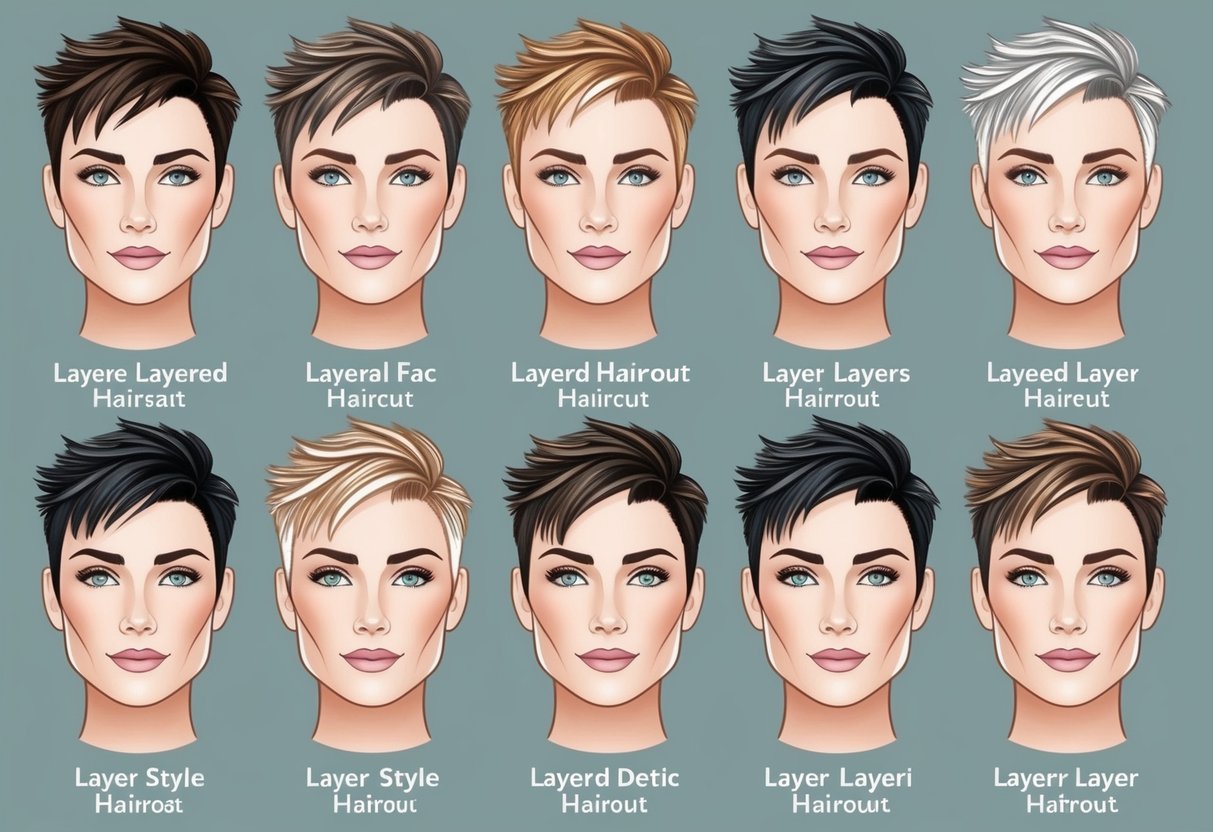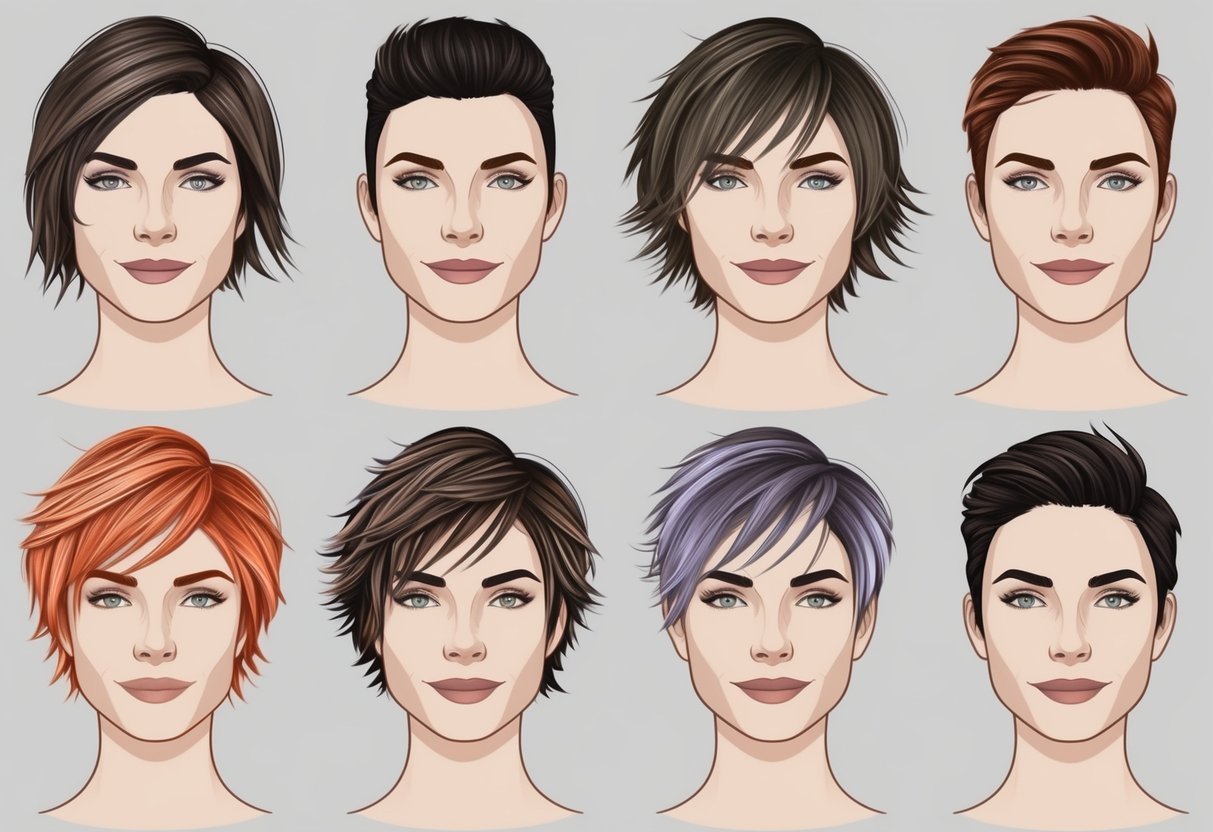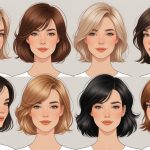
Choosing the right layered haircut can dramatically improve how a hairstyle frames and complements a person’s unique face shape.
Selecting appropriate layers for individual face shapes brings balance, enhances natural features, and creates a flattering, personalized look.
With so many options available, understanding what cuts work best for round, oval, square, or heart-shaped faces helps anyone achieve hair that not only looks stylish but also feels suited to them.
From short and tousled choppy layers to long cascading waves, layered haircuts offer versatility for all hair textures and preferences.
Experts agree that specific cutting techniques and lengths can highlight cheekbones, slim down wider areas, or add volume where it’s most needed.
Readers searching for tailored advice on layered haircuts for round, oval, heart, or square faces can discover helpful tips and inspiration in guides on layered hairstyles for every face shape and how layers balance facial features.
Understanding Layered Haircuts

Layered haircuts help shape and enhance natural texture, offering practical solutions for adding volume and movement to various hairstyles.
This section breaks down the core features of layered hair, common variations, and how different hair types can benefit from layers.
What Are Layered Haircuts?
A layered haircut involves cutting hair at different lengths throughout the head.
Instead of a blunt cut, the stylist creates multiple lengths.
These layers can be subtle, with just a few inches difference between sections, or dramatic, producing distinct, separated sections for a bolder effect.
This technique is used for straight, wavy, or curly hair.
Some layers start around the chin or jawline, while others begin much higher or lower.
Proper face shape analysis guides how and where layers should fall for a balanced and flattering look.
The versatility of layered haircuts means they can be adapted for short, medium, and long hairstyles.
Stylists often recommend specific layering patterns to complement facial proportions and enhance features.
For more detail, see this guide on layered hair for different face shapes.
Popular Layered Haircut Variations
There are several common types of layered haircuts, each creating a unique result:
- Long Layers: Minimal graduation; layers often start below the chin for flow and movement.
- Short Layers: Dramatic change in lengths, often used to add volume at the crown or frame the face.
- Shag Layers: Texturizing throughout the entire length, great for natural body and tousled looks.
- Feathered Layers: Soft ends that blend easily, producing a light and airy texture.
These variations can be mixed and matched to suit both personal style and hair texture.
Layered hairstyles are suitable for thinning hair needing volume, thick hair that requires shaping, and curly hair wanting defined, manageable curls.
Explore more types of layered haircuts for examples and inspiration.
Benefits of Layers for Different Hair Types
Layers are especially effective for modifying the overall shape and feel of a haircut.
For straight hair, layers bring movement by breaking up density and preventing a heavy, flat appearance.
In wavy or curly hair, strategically placed layers help define curl patterns and reduce bulk.
Fine hair can gain fullness and lift with well-placed layers, as shorter strands push up longer ones, creating natural volume.
For thick or coarse hair, layers make heavy hair lighter and easier to style.
This technique also helps curly or textured hair avoid the “pyramid” effect by distributing weight more evenly.
By tailoring the layering method to the hair’s natural texture and density, stylists are able to achieve flattering and practical results for nearly every client.
How Face Shape Influences Haircuts
Layered haircuts can highlight and balance a person’s natural features when tailored to their unique facial silhouette.
The suitability of a cut largely depends on the shape of the face and the relationship between the forehead, cheekbones, and jawline.
Identifying Your Face Shape
Understanding face shape is the foundation for choosing the most flattering layered haircut.
The main types include round, oval, square, heart, and diamond.
Each type creates a unique outline or silhouette, which influences which hairstyles look the most harmonious.
A helpful tip is to stand facing a mirror, pull hair back, and observe the broadest points and length of the face.
Measuring the widths of the forehead, cheekbones, and jawline, along with overall face length, often clarifies which category a person fits.
Some recommend using a soft tape measure or even a photo to trace the general outline.
Professional stylists typically look at proportions and overall contour.
For instance, a round face often features softer angles, while a square shape is marked by a prominent, angular jawline.
Detailed guidance on this process is provided by many hair experts, such as in Buzzed Barbers’ face shape identification guide.
Key Features: Forehead, Jawline, and Cheekbones
Three facial features play a dominant role in defining how a layered cut will sit: the forehead, the jawline, and the cheekbones.
- Forehead: A broad forehead can be balanced with layers that begin below the cheekbones or chin.
- For narrow foreheads, shorter layers and volume at the top provide dimension.
- Jawline: A strong, square jaw responds well to soft, flowing layers that create a rounded effect, while defined or angular cuts can sharpen less pronounced jawlines.
- According to MBS Hair Design, softer shapes are especially flattering for those with a prominent jaw.
- Cheekbones: High, pronounced cheekbones benefit from layers that either accentuate or soften their impact, depending on the desired look.
Face-framing layers placed at the level of the cheekbones can highlight this area, giving more structure to the overall silhouette.
A successful layered haircut uses these features as guides, ensuring the final look highlights the individual’s natural bone structure and balances proportions for an attractive and tailored result.



